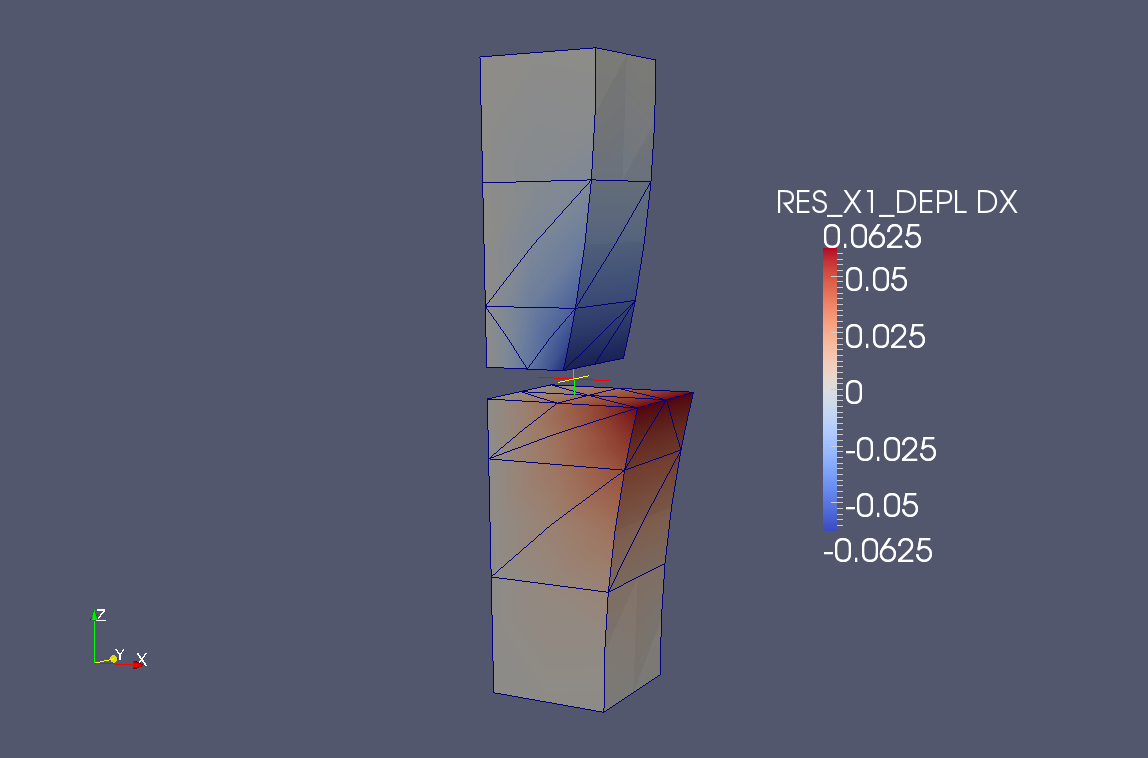6. D modeling#
6.1. Characteristics of modeling#
This is a 3D model using quadratic XFEM elements. The column on which the modeling is performed is divided into 5 HEXA20. The interface is unmeshed and cuts the column in \(Z={L}_{d}=\frac{\mathit{LZ}}{2}\). The interface is thus in accordance with the middle nodes of the central element. We have 3 XFEM elements and 2 classic elements.
6.2. Characteristics of the mesh#
The mesh is identical to that of the c-modeling except that it is quadratic. It is composed of 5 HEXA20.
6.3. Tested sizes and results#
The results (resolution with STAT_NON_LINE) are summarized in the table below for the \(z\) direction. We are testing the following \(z\) movement of the interface nodes.
Quantities tested |
Reference type |
Reference value |
Tolerance (%) |
DZ (below) MIN |
“ANALYTIQUE” |
-2.5E-02 |
0.001 |
DZ (above) MAX |
“ANALYTIQUE” |
2.5E-02 |
0.001 |
We also test the displacement along \(x\) of two interface nodes located on the face [BCFG] and respectively on the lower and upper lip of the crack.
Quantities tested |
Reference type |
Reference value |
Tolerance (%) |
DX (underside [BCFG]) |
“ANALYTIQUE” |
6.25E-02 |
0.001 |
DX (above face [BCFG]) |
“ANALYTIQUE” |
-6.25E-02 |
0.001 |
The displacement field is presented in the direction \(z\) (Figure) and \(x\) (Figure).
Figure 6.3-a : Field of movement by direction (Oz)

Figure 6.3-b : Field of movement according to direction (Ox)
